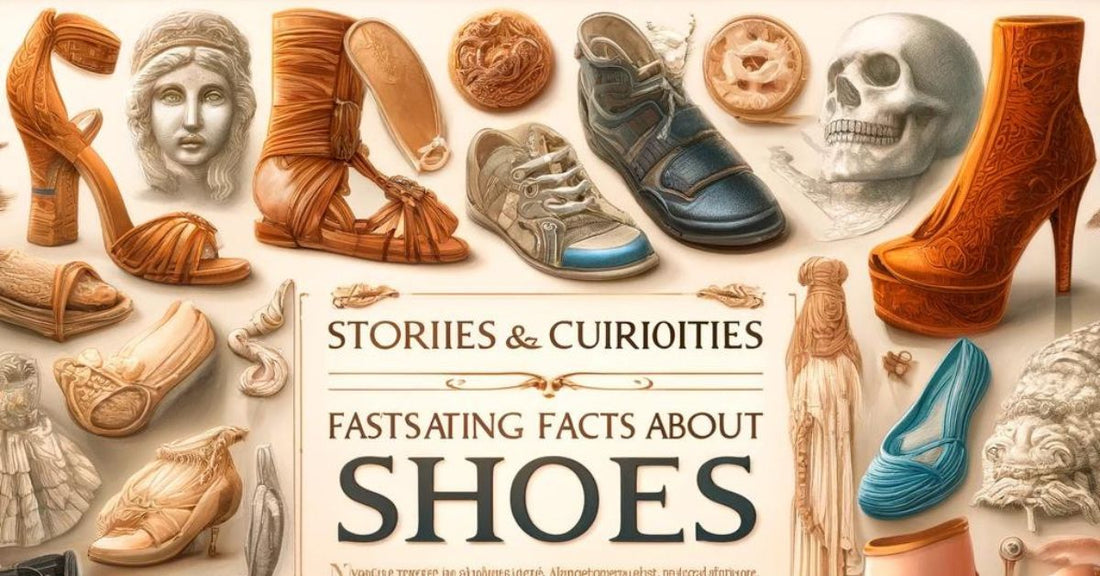Shoes have been an essential part of human attire for thousands of years, and they carry with them a rich history and a plethora of fascinating facts. In this article, "Your Ideal Shoe Size" delves into the intriguing stories and curiosities surrounding footwear. From ancient origins to modern innovations, discover some captivating insights about the shoes we wear every day.
1. The Oldest Shoes in History
The oldest known shoes are a pair of sandals discovered in Fort Rock Cave, Oregon, dating back to around 7,000-8,000 BCE. Made from sagebrush bark, these ancient sandals reveal the early ingenuity of humans in creating functional footwear to protect their feet.
2. The Evolution of High Heels
High heels were initially worn by men! In the 10th century, Persian cavalry wore heels to secure their feet in stirrups while riding horses. By the 17th century, high heels had become a symbol of status and power among European aristocrats, both male and female. Today, high heels are predominantly associated with women's fashion.
3. The World’s Most Expensive Shoes
The most expensive shoes ever created are the Passion Diamond Shoes, valued at a staggering $17 million. These luxurious stilettos are encrusted with hundreds of diamonds, including two 15-carat D-grade diamonds. They were designed by Jada Dubai and Passion Jewelers and showcased in 2018.
4. The Story Behind Converse All Stars
The iconic Converse All Star sneakers were introduced in 1917 as basketball shoes. They gained immense popularity when basketball player Chuck Taylor endorsed them in the 1920s. Known for their distinctive design and versatility, Converse All Stars remain a staple in casual footwear fashion.
5. The Hidden History of the Ballet Flat
The ballet flat, a popular women's shoe, has its origins in the world of dance. The modern ballet flat was popularized by iconic actress Audrey Hepburn in the 1950s, but its design is rooted in the soft, flexible shoes worn by ballet dancers for centuries.
6. Sneakers and Sneaking Around
The term "sneakers" originated in the late 19th century because the rubber soles allowed wearers to move quietly, or "sneak." The lightweight and noiseless nature of these shoes made them ideal for casual wear and sports, leading to their widespread popularity.
7. The Significance of Red Soles
Christian Louboutin, the renowned French designer, is famous for his shoes with distinctive red soles. The idea came to him in 1993 when he painted the soles of a prototype with red nail polish. This signature style has become a symbol of luxury and high fashion.
8. Shoes as Status Symbols
Throughout history, shoes have often been used as status symbols. In ancient Egypt, the wealthiest citizens wore pointed shoes, while in medieval Europe, long-toed shoes indicated high social standing. Even today, designer brands and unique styles can signify one's status and taste.
9. The Science of Running Shoes
Modern running shoes are marvels of engineering, designed to enhance performance and reduce injuries. From cushioned soles to advanced materials, the development of running shoes involves extensive research into biomechanics, ensuring athletes can perform at their best.
10. Eco-Friendly Footwear
With growing environmental awareness, many brands are now focusing on sustainable footwear. Shoes made from recycled materials, organic fabrics, and eco-friendly production methods are becoming more popular. This shift reflects a broader trend towards sustainability in the fashion industry.
Conclusion
Shoes are more than just functional items; they are rich with history, cultural significance, and innovation. From ancient sandals to cutting-edge athletic shoes, the world of footwear is filled with fascinating stories and curiosities. At "Your Ideal Shoe Size," we love exploring these unique aspects of shoes and sharing them with you. Stay tuned for more intriguing insights into the world of footwear.

